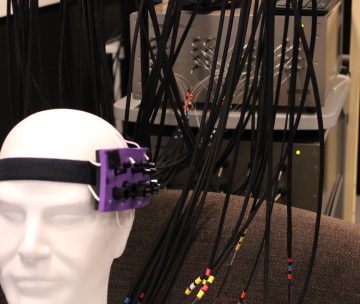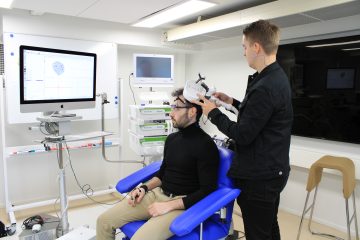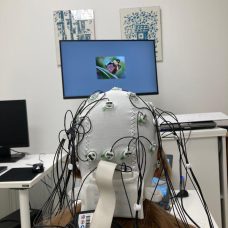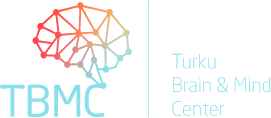Equipment
Optical Imaging Lab (fNIRS)
Functional Near Infrared Spectroscopy (fNIRS) is a non-invasive imaging method. It is used to refer to functional brain measurements and imaging by using near-infrared light. As a response to the stimulus, it estimates changes in the absorption of the optical signal. It provides a map of the areas where changes occur due to the variations of oxy – and deoxyhemoglobin concentrations. TBMC offers fNIRS equipment in the Medisiina B Building (4th floor, room 432), Turku.
Device:
ISS Imagent 2 (15 detectors, 16 sources)
Polhemus FASTRAK
Stimulus presentation system
Sennheiser ie40pro in-ear headphones
16 Genelec 8020 loudspeakers
Motu 16A audio interface

TMS, EMG
Transcranial Magnetic Stimulation (TMS) is a non-invasive neuromodulation technique that uses magnetic fields to stimulate specific brain regions. It has shown promise in treating various neurological and psychiatric disorders, such as depression and certain types of pain.
Electromyography (EMG) is a diagnostic technique used to evaluate the electrical activity produced by skeletal muscles. By placing electrodes on the skin or directly into the muscles, EMG can help identify neuromuscular abnormalities, diagnose nerve and muscle disorders, and assist in the development of rehabilitation plans for patients with motor impairments.

Turku Brainlab offers several devices in Medisiina B, including neuronavigated transcranial magnetic stimulation (TMS), transcranial electrical current stimulation (tDCS), peripheral nerve stimulation and electromyography systems.
Devices:
In Turku Brainlab:
TMS-stimulator DuoMag (MPx2 ja XT-100) + stimulation & placebo coils. As an accessory EMG headbox
TMS-stimulator Magventure MagPro and stimulation coil
Reomed 300 EMG/PAS system
In the Department of Psychology and Speech-Language Pathology:
TMS-MagPro X100
tDCS
Transcranial Direct Current Stimulation (tDCS) is a non-invasive neuromodulation method that involves applying a low electrical current to the scalp, influencing brain activity. By modulating neuronal excitability, tDCS has been explored for various applications, including cognitive enhancement, pain management, and the treatment of certain neurological and psychiatric conditions.
The BrainTrain research project of Åbo Akademi investigated the neurocognitive mechanisms of working memory, utilizing a wide array of methods, including tDCS of the brain.
EEG
Electroencephalography (EEG) is a non-invasive neuroimaging technique that records the brain’s electrical activity through electrodes placed on the scalp. EEG is used to study brain function, diagnose neurological disorders, monitor sleep patterns, and conduct research in neuroscience and psychology. Its high temporal resolution makes it valuable for investigating brain activity in real time and understanding various cognitive processes.
TBMC offers EEG equipment in the Department of Psychology and Speech-Language Pathology.
Device:
3 pcs 32-64 ch NeurOne EEG (TMS/MRI compatible)

Eyetracking
Eyetracking is used to monitor and record the movement of the eyes and gaze points as they view or interact with visual stimuli, such as images, videos, or user interfaces. This information provides valuable insights into human behavior, attention, and cognitive processes.
The Turku EyeLabs multidisciplinary community of researchers organizes equipment rental and shares expertise on designing experiments, use of different equipment, and applications of various types of analytical tools.
